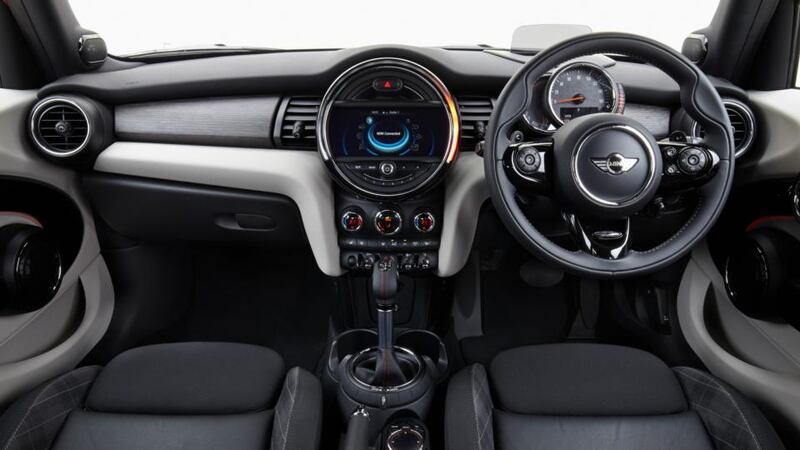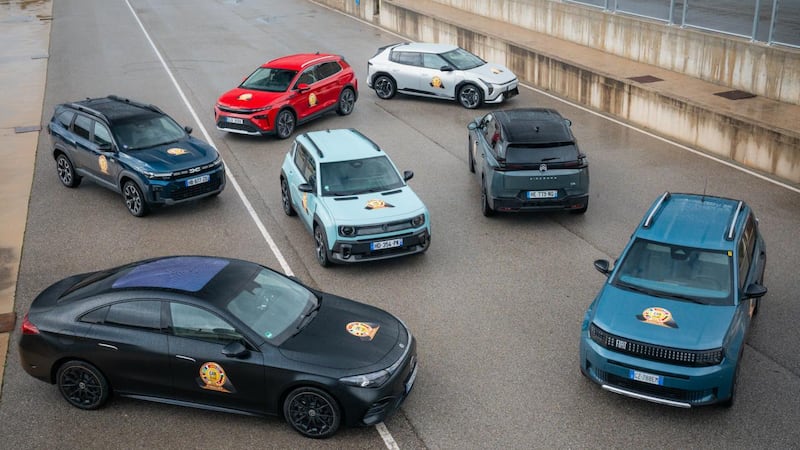Another year passes and another Mini derivative lands on our forecourts. This time it's the five-door version of the recently launched third-generation hatchback. Ah yes, you say, but they've had five-door Minis already. Well, not officially in the hatch format my retro friend.
The five-door hatch wears its additional doors well and retains the classic Mini silhouette. In order to accommodate the rear doors the Mini’s wheelbase has been extended by 72 millimetres. Its body is 161 millimetres longer and 11 millimetres taller than its three-door sibling. This benefits rear seat passengers who gain an additional 72 millimetres legroom in comparison to the three-door hatch.
The boot volume also sees an increase with a capacity of 278 litres, up 67 litres from the three-door hatch. This can be increased to 941 litres with the rear seats folded. Rear passenger space is surprisingly large for a car of this proportion; there is ample headroom.

This five-door variant gains an additional third seat in the rear, although it’s clearly more suitable for children than adults.
Irish motorists will have the choice of three petrol and three diesel engines to power their Mini five-door hatch, when it arrives in Ireland in late October. The entry-level Mini One is priced from €21,210, a €710 premium over its three-door sibling. Its 1,200cc three-cylinder petrol engine produces 102hp and can return a combined fuel consumption of 4.9L/100km (57.6mpg). The Cooper variant is powered by a 1.5-litre three-cylinder petrol engine that offers 136hp and 220Nm of torque, with an annual road tax fee of €190. The powerful Cooper S utilises a 2.0-litre four-cylinder petrol engine that produces 192hp and 280Nm of torque.
Emissions
The diesel-powered range starts at €22,430 for the Mini One D, an increase of €670 above the three-door hatch. It has a 1.5-litre three-cylinder diesel engine under its bonnet that produces 95bhp with CO2 emissions from 92g/km and combined fuel consumption of 3.5L/100km (80.7mpg).
The Cooper D is also powered by this engine complete with TwinPower turbo technology to produce 116hp. The dominant diesel derivative is the Cooper SD. It’s equipped with a 2.0-litre four-cylinder engine that produces 170hp and 360Nm of torque. All models of the new Mini five-door hatch are equipped with a six-speed manual transmission, with an optional six-speed automatic transmission available.
We test drove both the Cooper S and Cooper SD models at launch. Both cars had the six-speed automatic transmission which works perfectly around town and on the open road. This transmission really makes sense for city driving with a lot of stop starts. When you venture out of the city, you can take control of the gear shifts by manually changing gear with either the gear lever of the paddles behind the steering wheel.
Both cars excel on the road: the Cooper S we drove had the optional Mini driving modes. The steering is nicely weighted up and for me is the best part of the Mini’s driving experience. It provides you with a very direct feel to the front wheels in a similar vein to a go-kart, it’s impossible not to smile when driving along a twisty section of road in the Mini. Although the Cooper S is undoubtedly entertaining to drive, the three-cylinder Cooper and Cooper D would be the more sensible purchase with lower road tax fees and improved fuel efficiency.
The Mini five-door hatch makes perfect sense for the loyal Mini motorists who require more space and practicality but don’t want to sacrifice the fun driving experience that’s instilled in the three-door hatch.
Practical
It’s also less expensive then its larger sibling the Mini Countryman (priced from €25,490). It may well also attract fresh customers who previously dismissed the three-door hatch on practicality grounds. Its main competitor in this premium compact car segment will most likely be the Audi A1 Sportback. This seventh model to join the Mini family is a commendable one.














